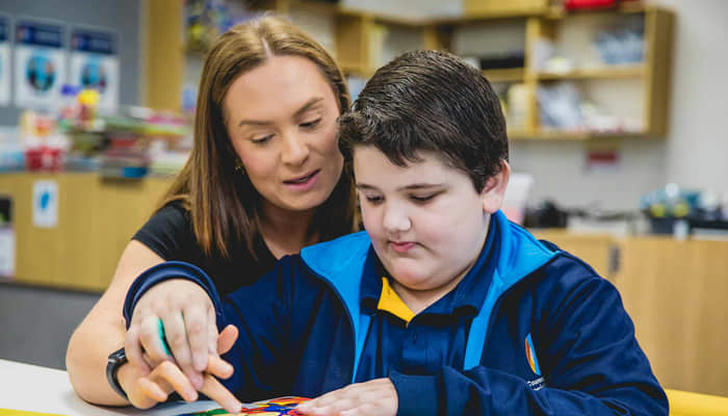Supporting Children with Autism: Effective Strategies and Resources for Parents

When it comes to parenting, every child is unique. But for parents of children with autism, that uniqueness can sometimes feel overwhelming. Autism Spectrum Disorder (ASD) affects social interaction, communication, and behavior, making day-to-day challenges a little trickier. However, with the right strategies and resources, you can help your child thrive. This guide will cover effective strategies, resources, and even share real-life examples to show how you can navigate this journey.
What is Autism?
Autism Spectrum Disorder (ASD) is a developmental disorder that affects the way a child interacts with others, learns, and behaves. The "spectrum" refers to the wide range of challenges and strengths that people with autism may have. Some children may need a lot of support in daily life, while others may need little to no assistance.
Children with autism may:
● Have difficulty understanding social cues
● Struggle with communication, such as speaking or understanding language
● Show repetitive behaviors or interests
● Be very sensitive to sensory inputs like lights, sounds, or textures
It's important to note that every child with autism is different. Some children may have significant delays in speech and motor skills, while others may excel in certain areas like math, music, or art. As a parent, understanding your child’s individual needs is the first step toward supporting them effectively.

Strategy #1: Establish a Structured Routine
Children with autism often thrive in structured environments. A predictable routine helps them feel more secure and less anxious, as they know what to expect throughout the day. For example, having a consistent schedule for meals, schoolwork, playtime, and bedtime can help children with autism manage their day better.
Real-Life Example:
Sarah and Michael have a 5-year-old son named Oliver, who was diagnosed with autism at age 3. Initially, Oliver had trouble with transitions—moving from one activity to another would often cause meltdowns. But once Sarah and Michael introduced a visual schedule at home, things started to improve. The schedule showed pictures for each activity, and Oliver knew exactly what was coming next. This gave him a sense of control and reduced anxiety.
Solution:
You can use a visual schedule, such as a simple chart with pictures representing daily activities. For older children, you might use a written schedule. Stick to the routine as much as possible, but also be flexible for special occasions or changes.
Strategy #2: Use Clear and Simple Communication
Children with autism may struggle to understand complex language. It’s essential to use clear, direct communication. Avoid idioms or abstract language, as children with autism may interpret words very literally. Instead of saying, “Can you pick that up for me?”, you could say, “Pick up the toy.”
Real-Life Example:
David and Anna have a 7-year-old daughter, Emma, who is non-verbal. They learned early on that Emma responded better to simple, visual instructions. For example, instead of saying, “Let’s clean up the toys,” they would show her a picture of a toy being put into a bin, followed by a visual of the bin itself. Over time, Emma began to mimic the actions, and her communication improved.
Solution:
Use visual aids, gestures, and simple words. It’s also helpful to give your child extra time to process and respond to instructions.

Strategy #3: Focus on Sensory Needs
Many children with autism have sensory sensitivities—some may be hypersensitive (overreacting) or hyposensitive (underreacting) to certain sensory inputs. Sounds, lights, textures, and smells can be overwhelming or not noticeable at all. Understanding your child’s sensory preferences can help you create a more comfortable environment.
Real-Life Example:
John and Priya's son, Max, was extremely sensitive to loud noises. Even the sound of a vacuum cleaner could cause him to cover his ears and cry. After realizing this, they invested in noise-canceling headphones, which helped Max manage noisy environments. Over time, they also introduced calming sounds like soft music, which helped him feel more relaxed in the car.
Solution:
Identify which sensory inputs cause distress for your child. You can create a calming sensory-friendly environment by dimming lights, using noise-canceling headphones, or providing soft textures like a weighted blanket or a fidget toy. Trial and error will help you find what works best for your child.
Strategy #4: Encourage Social Skills
Social interaction can be one of the most challenging aspects of autism. Many children with autism struggle to understand social norms or to initiate conversations. However, this doesn’t mean that they can't learn social skills. Encouraging social interaction in a calm, structured way is key.
Real-Life Example:
When Emily and Ben’s son, Luke, was diagnosed with autism at age 4, they were concerned about his difficulty making friends. Luke didn’t know how to start a conversation or engage in pretend play with other kids. Emily and Ben enrolled Luke in a social skills group, where children practice social interaction through games and activities. After several months, Luke became more comfortable initiating conversations and joining in group activities.
Solution:
Find a social skills group or therapy that can help your child practice these skills in a safe, structured environment. You can also role-play social situations at home and offer positive reinforcement when your child practices good social behavior.

Strategy #5: Find the Right Resources and Support
There are countless resources available to parents of children with autism, from therapy programs to support groups. It can be overwhelming, but finding the right support system is essential. Research local autism support organizations, special education services, and online communities to connect with others who understand your journey.
Real-Life Example:
Linda and Steve’s daughter, Mia, was diagnosed with autism at age 2. They felt lost and unsure of where to turn for help. After speaking with their pediatrician, they were directed to a local autism resource center, which helped them connect with speech therapists, occupational therapists, and local support groups. With the help of these resources, Mia made significant progress in her communication skills and was able to attend a mainstream school with additional support.
Solution:
Start by reaching out to your child’s pediatrician or school for recommendations. There are many local and online resources that provide guidance, therapy options, and emotional support for families dealing with autism.
Final Thoughts
Parenting a child with autism can feel like a roller coaster—full of ups and downs, but also full of valuable lessons and personal growth. By establishing a routine, improving communication, addressing sensory needs, fostering social skills, and finding the right resources, you’ll be well on your way to supporting your child’s development and helping them thrive.
Remember, the journey may not always be easy, but with patience, love, and the right strategies, your child can reach their full potential. And don’t forget to celebrate every small victory along the way! Whether it’s a successful playdate or a new word spoken, these moments make the journey worthwhile.
The path to supporting a child with autism is unique for every family, but you are never alone. By sharing experiences, finding the right tools, and adapting to your child’s needs, you can ensure that they live a fulfilling and happy life. Keep pushing forward, and remember, every step forward is a step toward success.
